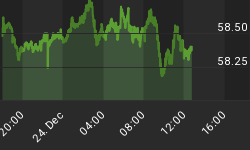This is an excerpt from the Resource Stock Guide Newsletter posted on March 22, 2008.
What caused such a vicious correction in commodities which took gold along for the ride? We have recently expressed concerns that sentiment became overly optimistic and a technical correction was needed to relieve overbought conditions.
But why was the correction so sharp? The main reason is that the de-leveraging process began to spread from financial paper, particularly mortgage backed securities, into other markets including the commodities sector. Stricter lending standards are causing traders to reduce overall positions, decrease risk and reduce their dependence on borrowed funds. Led by the hedge funds, the highly leveraged players started selling speculative positions in commodities. The correction happened in an instant as some hurried to take profits, while others were met with margin calls.
Excess cash was quickly funneled into the shortest maturity government debt - 3-month T-Bills, which typically approximate the fed funds rate set by the Federal Reserve. As a result, the T-Bill yields collapsed to a historic low of under 0.50%, light years away from the fed funds rate of 2.25%.

The chart of the 3-month T-Bill yields above shows an extreme level of panic in the markets. Traders are operating by a philosophy of "sell first, think later," dumping all of their proceeds into what is perceived to be the safest possible short term investment.
The flight to safety panic cannot continue much further and this unusual amount of cash sitting in T-Bills will have to find a home elsewhere. It will return to the most oversold sectors of the stock market, stabilizing precious metals and related stocks in the process.
















